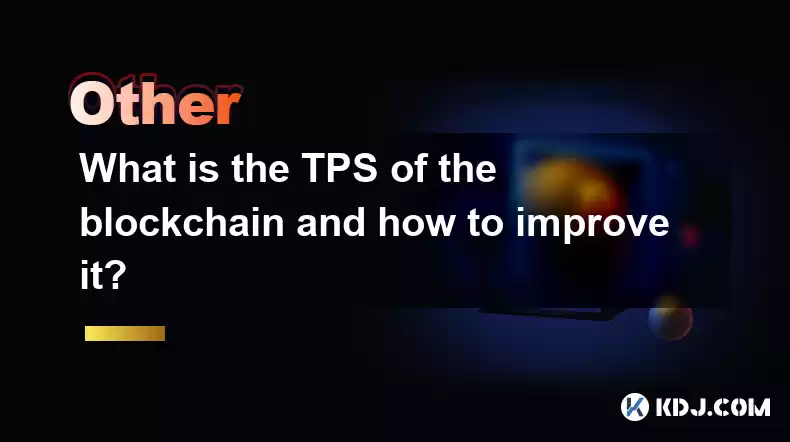-
 Bitcoin
Bitcoin $113900
0.47% -
 Ethereum
Ethereum $3491
-0.42% -
 XRP
XRP $2.876
-1.87% -
 Tether USDt
Tether USDt $1.000
0.03% -
 BNB
BNB $750.4
-0.49% -
 Solana
Solana $161.3
-1.76% -
 USDC
USDC $0.9999
0.01% -
 TRON
TRON $0.3242
-0.91% -
 Dogecoin
Dogecoin $0.1985
-0.19% -
 Cardano
Cardano $0.7241
1.49% -
 Hyperliquid
Hyperliquid $38.05
0.56% -
 Stellar
Stellar $0.3896
2.92% -
 Sui
Sui $3.442
0.61% -
 Chainlink
Chainlink $16.18
0.92% -
 Bitcoin Cash
Bitcoin Cash $541.0
0.51% -
 Hedera
Hedera $0.2427
2.67% -
 Ethena USDe
Ethena USDe $1.001
0.03% -
 Avalanche
Avalanche $21.39
-0.68% -
 Toncoin
Toncoin $3.669
2.25% -
 Litecoin
Litecoin $109.5
0.95% -
 UNUS SED LEO
UNUS SED LEO $8.966
0.11% -
 Shiba Inu
Shiba Inu $0.00001218
0.77% -
 Polkadot
Polkadot $3.598
1.23% -
 Uniswap
Uniswap $9.164
1.14% -
 Monero
Monero $297.7
1.21% -
 Dai
Dai $1.000
0.00% -
 Bitget Token
Bitget Token $4.328
0.84% -
 Pepe
Pepe $0.00001047
1.05% -
 Cronos
Cronos $0.1329
0.70% -
 Aave
Aave $257.6
1.03%
What is the TPS of the blockchain and how to improve it?
TPS measures blockchain transaction speed; improving it involves layer 2 solutions, sharding, and consensus upgrades for better scalability and efficiency.
Apr 14, 2025 at 01:15 am

What is the TPS of the Blockchain and How to Improve It?
Transactions per second (TPS) is a critical metric in evaluating the performance of a blockchain network. It measures the number of transactions a blockchain can process in one second, directly impacting the scalability and efficiency of the system. Understanding TPS and exploring methods to enhance it are essential for developers and users within the cryptocurrency ecosystem. This article delves into the concept of TPS, its significance, and various strategies to improve it.
Understanding TPS in Blockchain
TPS represents the throughput of a blockchain, indicating how many transactions can be validated and added to the blockchain within a single second. For instance, Bitcoin's TPS is around 7, while Ethereum's is approximately 15. These numbers highlight the limitations of these networks in handling large volumes of transactions, leading to slower processing times and higher fees during peak usage.
The significance of TPS lies in its direct impact on the user experience. A higher TPS means faster transaction confirmations, lower fees, and better overall performance. This is crucial for blockchain networks aiming to support applications requiring high transaction volumes, such as decentralized finance (DeFi) platforms and gaming ecosystems.
Factors Affecting TPS
Several factors influence the TPS of a blockchain network. Block size is a primary determinant; larger blocks can accommodate more transactions, potentially increasing TPS. However, larger blocks also increase the time required for block propagation across the network, which can lead to centralization issues.
Block time is another critical factor. Shorter block times allow for quicker transaction confirmations, but they can also lead to increased orphan blocks and network congestion. Consensus mechanism plays a significant role as well; Proof of Work (PoW) systems, like Bitcoin, tend to have lower TPS due to their energy-intensive nature, whereas Proof of Stake (PoS) and other consensus algorithms can achieve higher throughput.
Strategies to Improve TPS
Improving TPS involves various technical and architectural enhancements. Here are some effective strategies:
Layer 2 Scaling Solutions: These solutions, such as Lightning Network for Bitcoin and Optimistic Rollups for Ethereum, process transactions off the main blockchain, significantly increasing TPS. They work by bundling multiple transactions into a single transaction on the main chain, reducing the load and speeding up processing times.
Sharding: This technique involves dividing the blockchain into smaller, parallel pieces called shards. Each shard processes its own set of transactions, allowing the network to handle more transactions simultaneously. Ethereum's transition to Ethereum 2.0 is a prime example of implementing sharding to improve TPS.
Consensus Mechanism Upgrades: Switching from PoW to more efficient consensus mechanisms like PoS or Delegated Proof of Stake (DPoS) can dramatically increase TPS. For instance, EOS uses DPoS and claims to achieve thousands of TPS.
Increasing Block Size and Reducing Block Time: Adjusting these parameters can directly impact TPS. However, these changes must be carefully managed to avoid network instability and centralization risks.
Implementing Layer 2 Scaling Solutions
Layer 2 scaling solutions are a popular approach to improving TPS. Here's a detailed guide on how to implement the Lightning Network for Bitcoin:
Install a Lightning Network Wallet: Choose a reputable wallet that supports the Lightning Network, such as Zap or Muun. Download and install the wallet on your device.
Fund Your Wallet: Transfer Bitcoin from your main wallet to the Lightning Network wallet. This step involves creating a channel with the network, which requires an initial deposit.
Open a Payment Channel: Use the wallet to open a payment channel with another Lightning Network user. This channel allows for instant, off-chain transactions between the two parties.
Conduct Transactions: Perform transactions within the channel. These transactions are processed instantly and at a lower cost compared to on-chain transactions.
Close the Channel: Once you're done with your transactions, close the channel. The final state of the channel is then recorded on the Bitcoin blockchain, settling the transactions.
Implementing Sharding
Sharding is a more complex but highly effective method to improve TPS. Here's how to implement sharding in a hypothetical blockchain network:
Design the Sharding Architecture: Determine the number of shards and how they will interact with each other. Each shard should be capable of processing transactions independently.
Implement Cross-Shard Communication: Develop protocols for transactions that span multiple shards. This involves creating mechanisms for shard coordination and data consistency.
Deploy Sharding Nodes: Set up nodes that will manage each shard. These nodes should be distributed across the network to ensure decentralization.
Test and Optimize: Conduct thorough testing to ensure the sharding system works as intended. Optimize the system based on performance metrics and user feedback.
Real-World Examples of TPS Improvement
Several blockchain projects have successfully implemented strategies to improve their TPS. Solana is known for its high throughput, claiming to achieve over 65,000 TPS through a combination of PoS and a unique consensus mechanism called Proof of History (PoH). Polkadot uses a sharding-like approach called parachains, allowing for parallel transaction processing and significantly increasing TPS.
Ethereum is undergoing a major upgrade with Ethereum 2.0, which includes transitioning to PoS and implementing sharding. These changes are expected to increase Ethereum's TPS from around 15 to potentially thousands of transactions per second.
Challenges and Considerations
While improving TPS is crucial, it comes with its own set of challenges. Security is a primary concern; scaling solutions must maintain the integrity and security of the blockchain. Decentralization is another critical factor; any scaling solution should not compromise the decentralized nature of the network.
Interoperability between different scaling solutions and the main blockchain can also be challenging. Ensuring seamless integration and user experience is essential for the success of any TPS improvement strategy.
Frequently Asked Questions
Q: How does TPS affect the cost of transactions on a blockchain?
A: Higher TPS generally leads to lower transaction fees because the network can process more transactions in a given time, reducing the competition for block space. Conversely, lower TPS can result in higher fees, especially during periods of high demand.
Q: Can TPS be improved without compromising security?
A: Yes, TPS can be improved without compromising security by implementing well-designed scaling solutions like layer 2 protocols and sharding. These solutions must be thoroughly tested and audited to ensure they maintain the blockchain's security standards.
Q: What role does the consensus mechanism play in TPS?
A: The consensus mechanism significantly impacts TPS. PoW systems tend to have lower TPS due to their energy-intensive nature, while PoS and other more efficient mechanisms can achieve higher throughput by reducing the time and resources needed for transaction validation.
Q: Are there any trade-offs to consider when improving TPS?
A: Yes, improving TPS often involves trade-offs. For instance, increasing block size can lead to centralization risks, while reducing block time might increase the number of orphan blocks. Balancing these trade-offs is crucial for maintaining a robust and efficient blockchain network.
Disclaimer:info@kdj.com
The information provided is not trading advice. kdj.com does not assume any responsibility for any investments made based on the information provided in this article. Cryptocurrencies are highly volatile and it is highly recommended that you invest with caution after thorough research!
If you believe that the content used on this website infringes your copyright, please contact us immediately (info@kdj.com) and we will delete it promptly.
- Altcoins Most Searched: Hedera (HBAR) and the ETF Hype
- 2025-08-03 20:50:16
- Arbitrage Adventures: Creditcoin, Kaspa, and Chasing Crypto Profits
- 2025-08-03 20:30:16
- Claude HIVE & Code Agents: Faster Coding Revolution?
- 2025-08-03 20:50:16
- Trump Media, Bitcoin, and Crypto: A Surprising Alliance in the Making?
- 2025-08-03 21:30:16
- Shiba Inu's Bullish Reversal Hopes Amid Market Uncertainty: A Deep Dive
- 2025-08-03 21:30:16
- Shiba Inu's Struggle, Mutuum Finance's Rise, and Key Support Levels: A Crypto Deep Dive
- 2025-08-03 20:55:16
Related knowledge

What is the difference between on-chain and off-chain transactions?
Aug 02,2025 at 04:22pm
Understanding On-Chain TransactionsOn-chain transactions refer to digital asset transfers that are recorded directly on a blockchain ledger. These tra...

What is a node's role in a blockchain network?
Aug 03,2025 at 03:16pm
Understanding the Function of a Node in a Blockchain NetworkA node is a fundamental component of any blockchain network, acting as a participant that ...

What is the double-spending problem and how does blockchain prevent it?
Aug 02,2025 at 01:07pm
Understanding the Double-Spending ProblemThe double-spending problem is a fundamental challenge in digital currency systems where the same digital tok...

What is the difference between a blockchain and a database?
Aug 01,2025 at 09:36pm
Understanding the Core Structure of a BlockchainA blockchain is a decentralized digital ledger that records data in a series of immutable blocks linke...

How does blockchain handle scalability?
Aug 02,2025 at 02:58pm
Understanding Blockchain Scalability ChallengesBlockchain scalability refers to a network's ability to handle an increasing volume of transactions wit...

What is the role of cryptography in blockchain?
Aug 03,2025 at 03:42pm
Understanding the Foundation of Blockchain SecurityCryptography is the cornerstone of blockchain technology, providing the essential tools to ensure d...

What is the difference between on-chain and off-chain transactions?
Aug 02,2025 at 04:22pm
Understanding On-Chain TransactionsOn-chain transactions refer to digital asset transfers that are recorded directly on a blockchain ledger. These tra...

What is a node's role in a blockchain network?
Aug 03,2025 at 03:16pm
Understanding the Function of a Node in a Blockchain NetworkA node is a fundamental component of any blockchain network, acting as a participant that ...

What is the double-spending problem and how does blockchain prevent it?
Aug 02,2025 at 01:07pm
Understanding the Double-Spending ProblemThe double-spending problem is a fundamental challenge in digital currency systems where the same digital tok...

What is the difference between a blockchain and a database?
Aug 01,2025 at 09:36pm
Understanding the Core Structure of a BlockchainA blockchain is a decentralized digital ledger that records data in a series of immutable blocks linke...

How does blockchain handle scalability?
Aug 02,2025 at 02:58pm
Understanding Blockchain Scalability ChallengesBlockchain scalability refers to a network's ability to handle an increasing volume of transactions wit...

What is the role of cryptography in blockchain?
Aug 03,2025 at 03:42pm
Understanding the Foundation of Blockchain SecurityCryptography is the cornerstone of blockchain technology, providing the essential tools to ensure d...
See all articles

























































































